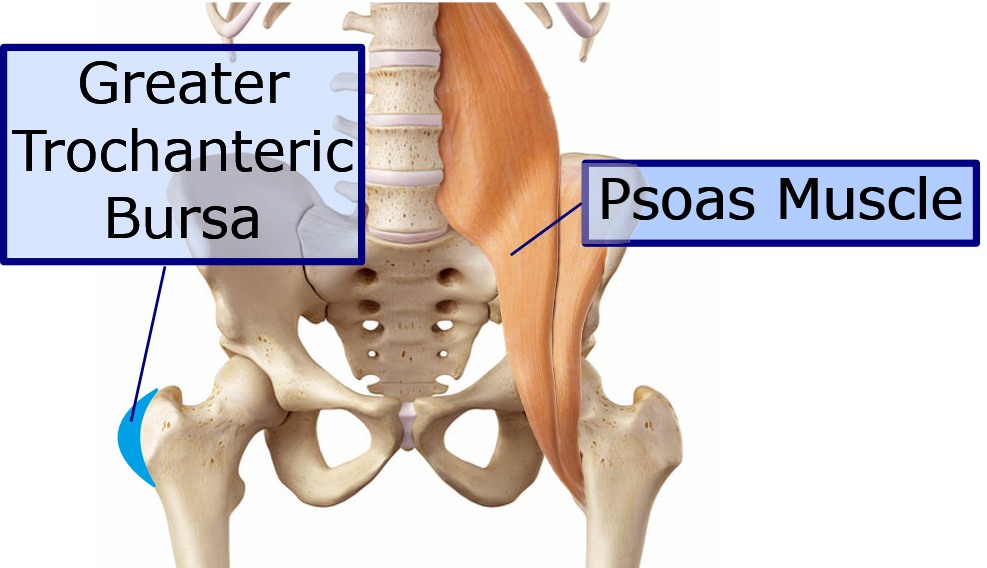Hip Pain Relief in Norwich
 Hip pain is very common. It often involves more than the hip joint (articulating surface) with pain coming from several additional structures.
Hip pain is very common. It often involves more than the hip joint (articulating surface) with pain coming from several additional structures.
The hip joint is part of a chain of joints that transfers weight from the body, through the spine and into the sacrum. Weight is then transferred across the sacroiliac joints into the pelvis, down through the hip joint and into the femur, to the knee, along the tibia and into the ankle and foot.
This complex chain of weight bearing involves joints, nerves and muscles in the spine, buttock, hip, legs and feet, together with an array of ligaments, tendons and bursas. This mobile structure can be locked into very stable and strong positions. This allows for dynamic weight bearing where the muscles lock the hip, pelvis and lower back into complex patterns. This accommodates powerful forces to be placed through the body into the ground.
When pain begins it is important to assess two main things;
- The type of pain; inflammation, muscle spasm or nerve irritation
- The structures involved; It is not uncommon to find that the injury affects areas which are not painful as well as those where hip pain is most acute.
Chiropractors are trained to identify how the hips are affected by the rest of the body. Chiropractic care focuses on improving the motion of joints together with the nerve activity – two crucial components of healing.
In cases of hip pain, we examine the pelvis, spine, knees and ankles to ensure that these areas are functioning well. Restoring proper function to the chain of movement (open kinematic chain) allows the body to heal and addresses the injury as a whole.
The hip is part of a complex mechanical chain. What complicates hip pain is that it can be caused by a number of factors and exacerbated by injury to several other related structures. Chiropractors are uniquely placed to identify which underlying problems contribute to the hip pain and help resolve them.
What Causes Hip Pain?
The following includes examples of injuries that can cause hip pain.

- Joint Damage: When this occurs at a joint the whole chain of motion is affected and places strain on the surrounding structures. Joints that are restricted for a period of time become stiff, lose their flexibility, harden and can calcify in a process known as osteoarthritis, degeneration or wear & tear. Other joints such as the sacroiliac joints, spinal joints, knee and ankle joints can become restricted or locked, placing more strain on the hip joints. We undertake checks to ensure that the whole kinematic chain (weight bearing chain) is working well.
- Bursitis: Inflammation of the bursa – these fluid-filled sacs surround certain joints helping to reduce friction and provide cushioning for the joint.
- Muscle Strain or Overuse – The wrong type of physical activity, or overuse, can result in damage or inflammation to the muscles that surround the hip, resulting in pain and stiffness. This can involve injury to structures such as the iliotibial band (IT Band or ITB), also known as the tensor fascia lata (TFL), giving rise to ITB syndrome (ITBS). Injury could also be related to the insertion of the psoas muscle, which together with the iliacus has a common tendon in the groin. Pain at this tendon is common in back and hip pain.
- Arthritis – This can be common in the hip. With more than 200 different kinds of arthritis, symptoms are not limited to joint pain and swelling. The two main types of arthritis are osteoarthritis and inflammatory conditions such as rheumatoid arthritis. Age and previous injury are indicators of degenerative changes. Chiropractors have a number of tests that are used to ascertain if arthritis is likely to be present.
Hip Pain is not always degenerative. Hip degeneration (apart from aggressive inflammatory degeneration) occurs over many years and it is important to stretch and exercise to encourage good hip health. Hip pain can occur in clients of any age, although is more common in those who are 45 and older. Many older clients have some degenerative changes but this does not mean that they need surgery. Often chiropractic care can help
How Chiropractic Care Helps
Chiropractic care improves hip, leg and back movement and helps restore good function to walking gait. Studies suggest that chiropractic care and exercise reduce the rate of joint degeneration over time.
Restoring good motion to joints stimulates the nerve supply to the area, pumps oxygen and nutrients around the structures and stimulates fibroblast activity. Fibroblasts are a type of cell that play a critical role in wound healing and are the most common type of cells in connective tissue, including cartilage.
Chiropractic care also helps by allowing core muscles and joint stabilising muscles to fire accurately, thus producing a smooth and clean movement which reduces load to a joint and stimulates healing. For those who suffer from arthritic conditions we have very safe, low force techniques that promote movement without putting strain on the arthritic joint. Many clients come with hip pain that they have experienced for several years and are delighted to find that we can help them get better – permanently.
What To Do Now
Please telephone us to discuss your needs and history. We are always happy to assist in resolving long term and persistent problems. Contact us to make a convenient time for you to see our chiropractor.

